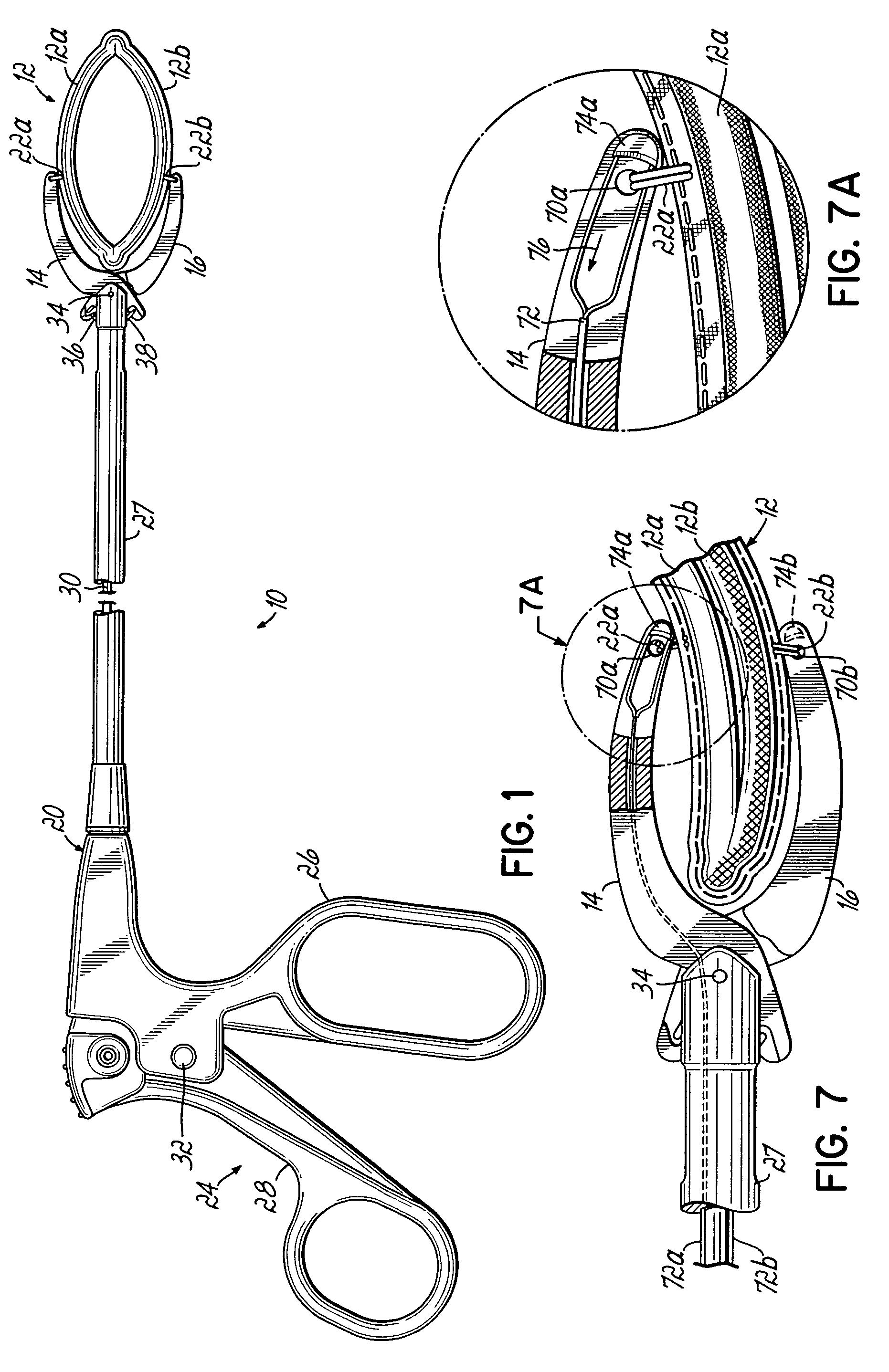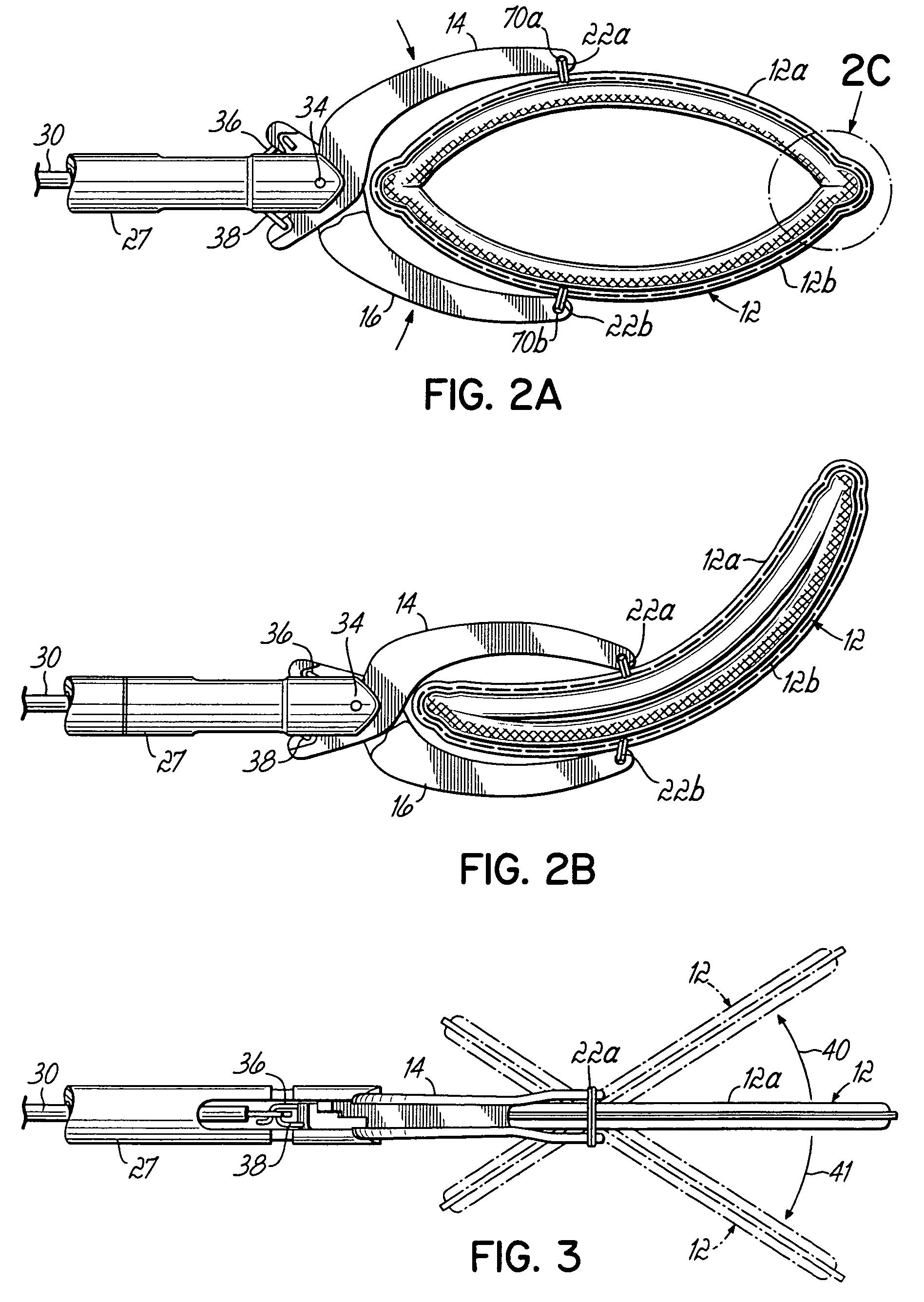Apparatus and methods for occluding a hollow anatomical structure
a hollow tissue and anatomical structure technology, applied in the field of surgical methods and apparatus for occluding a hollow tissue structure, can solve the problems of atria quivering or beating too fast, normal, congestive heart failure, etc., and achieve the effect of positive attachment of the clamp to the tissu
- Summary
- Abstract
- Description
- Claims
- Application Information
AI Technical Summary
Benefits of technology
Problems solved by technology
Method used
Image
Examples
Embodiment Construction
[0072]Referring initially to FIGS. 1, 2A, 2B and 3, a first embodiment of the invention includes an apparatus 10 comprising a clamp 12 having respective first and second clamping portions 12a, 12b secured between first and second jaws 14, 16. A delivery and actuation device 20 carries first and second jaws 14, 16 for actuating clamp 12 between open and closed or clamping positions as will be described further below. Clamp portions 12a, 12b are secured to jaws 14, 16 by respective sutures 22a, 22b. Delivery and actuation device 20 includes a pistol grip 24 having a stationary handle 26 coupled with an elongate jaw support member 27. A movable handle 28 is coupled with an actuating bar 30 and pivots with respect to stationary handle 26 at a pivot member 32. When movable handle 28 is depressed toward stationary handle 26, this action draws actuating bar 30 to the left as viewed in FIG. 1. Actuating bar 30 has a connecting portion 30a secured to respective rigid wire members 36, 38. Wir...
PUM
 Login to View More
Login to View More Abstract
Description
Claims
Application Information
 Login to View More
Login to View More - R&D
- Intellectual Property
- Life Sciences
- Materials
- Tech Scout
- Unparalleled Data Quality
- Higher Quality Content
- 60% Fewer Hallucinations
Browse by: Latest US Patents, China's latest patents, Technical Efficacy Thesaurus, Application Domain, Technology Topic, Popular Technical Reports.
© 2025 PatSnap. All rights reserved.Legal|Privacy policy|Modern Slavery Act Transparency Statement|Sitemap|About US| Contact US: help@patsnap.com



